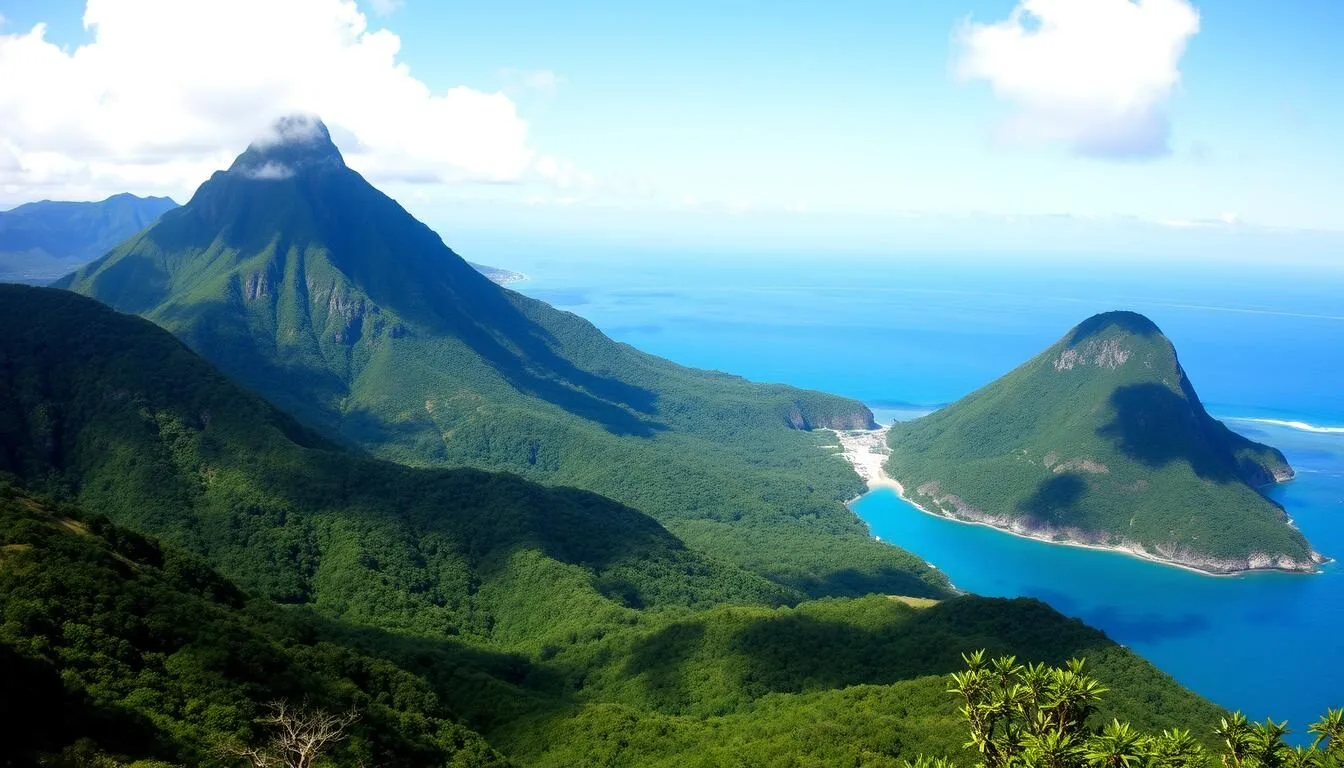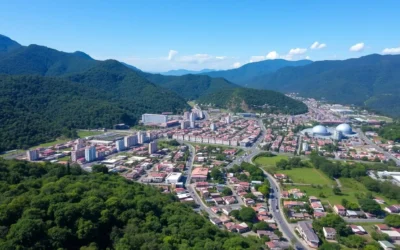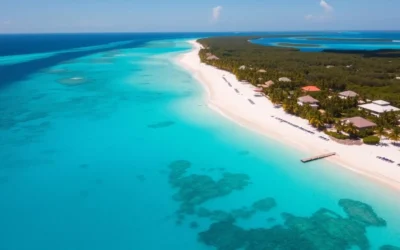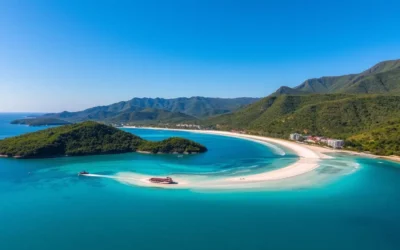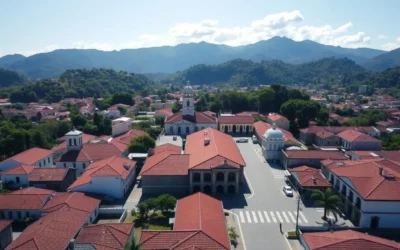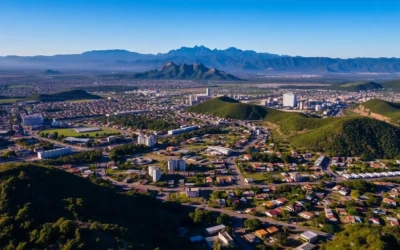Did you know that Capiro Calentura National Park is home to one of Honduras’ most spectacular panoramic views? From the summit of its twin mountains, visitors can witness the breathtaking expanse of Trujillo Bay, where the lush rainforest meets the crystal-clear Caribbean waters. Established in 1992, this 8,000-hectare protected area remains one of Central America’s lesser-explored natural treasures, offering adventurous travelers a chance to experience pristine ecosystems away from the tourist crowds.
The breathtaking view from Capiro Calentura National Park overlooking Trujillo Bay
Getting There & Planning Your Journey
Capiro Calentura National Park is located near the coastal town of Trujillo in northern Honduras. The park entrance sits at the southern end of town, making it easily accessible for visitors staying in Trujillo. To reach this natural paradise, you’ll first need to make your way to Trujillo.
Ready to explore Capiro Calentura National Park?
Find the best flight deals to Honduras and start your adventure!
From major Honduran cities like Tegucigalpa or San Pedro Sula, you can reach Trujillo by bus or rental car. The journey from Tegucigalpa takes approximately 6-7 hours by road, while from San Pedro Sula it’s about 4-5 hours. If you’re coming from abroad, the nearest international airports are Ramón Villeda Morales International Airport in San Pedro Sula or Palmerola International Airport near Tegucigalpa.

The welcoming entrance to Capiro Calentura National Park
For international travelers, consider flying into one of Honduras’ major airports and then arranging ground transportation to Trujillo. Many visitors find that renting a car provides the most flexibility for exploring both the park and surrounding areas.
Need transportation in Honduras?
Rent a car to explore Capiro Calentura National Park and beyond at your own pace.
Best Time to Visit & Weather Tips
Honduras has a tropical climate, with distinct dry and rainy seasons that affect your experience at Capiro Calentura National Park. The best time to visit is during the dry season, which typically runs from December to April. During these months, trails are more accessible, and the weather is generally more predictable for hiking and outdoor activities.
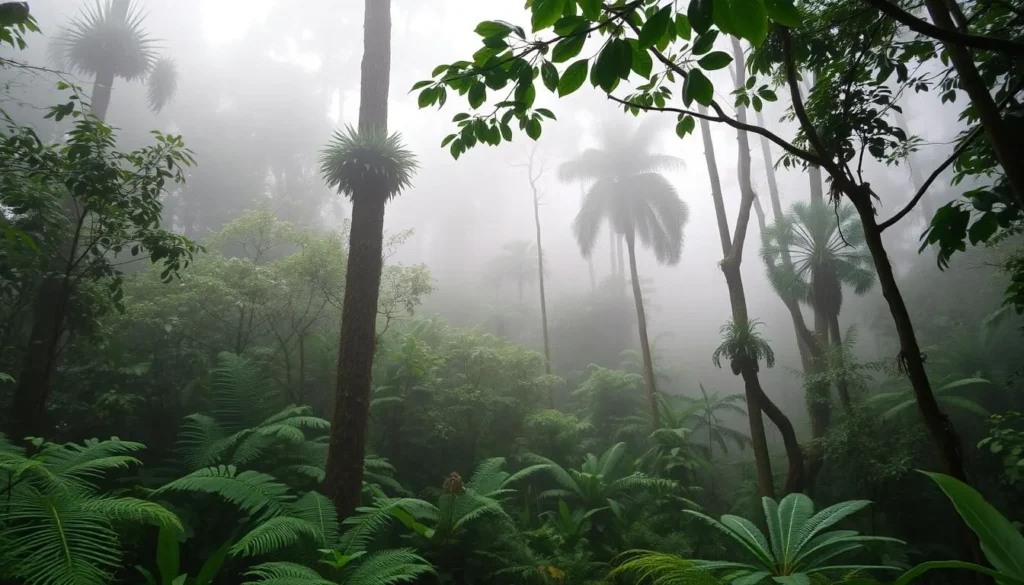
The mystical atmosphere of Capiro Calentura’s cloud forest during the rainy season
Dry Season (December-April)
- Less rainfall and humidity
- Better conditions for hiking to the summits
- Clearer views of Trujillo Bay
- Easier navigation of trails
- Peak tourist season with more visitors
Rainy Season (May-November)
- Lush, vibrant vegetation
- Fewer tourists and more solitude
- Challenging hiking conditions
- Potential for trail closures after heavy rains
- More active wildlife, especially birds
At higher elevations in the park, temperatures are cooler and mist often blankets the treetops, creating a magical atmosphere. However, this can also limit visibility at the summits. If seeing the panoramic views is important to you, aim for a clear morning during the dry season and start your hike early.
Weather Tip: Even during the dry season, it’s wise to pack a light rain jacket or poncho. The mountains can create their own weather patterns, and brief showers can occur year-round at higher elevations.
Getting Around Locally
Once you’ve arrived in Trujillo, getting to and around Capiro Calentura National Park is relatively straightforward. The park entrance is located at the southern end of town and is accessible by foot if you’re staying in central Trujillo.
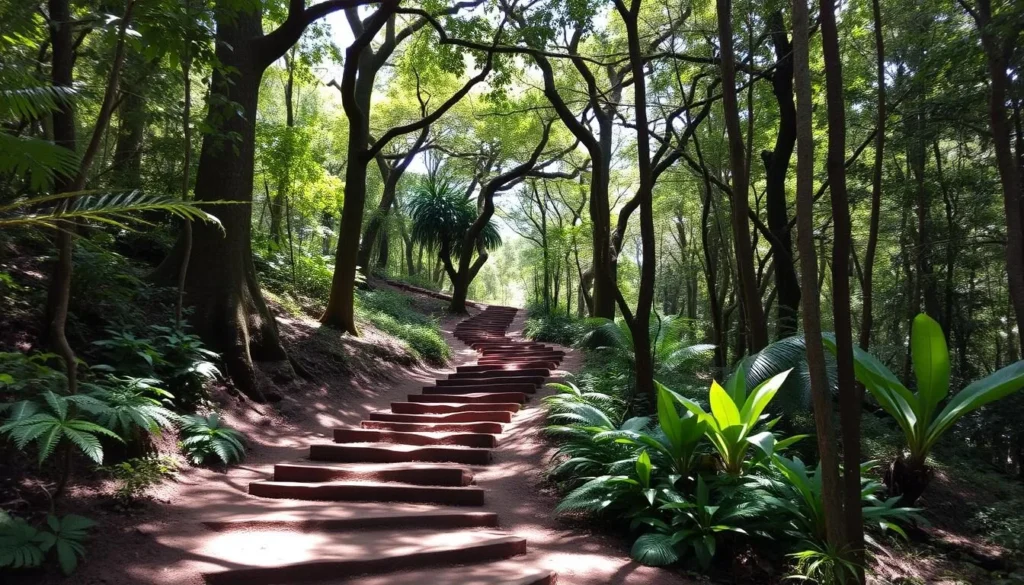
One of the hiking trails leading through Capiro Calentura’s lush forest
On Foot
The primary way to explore the park is on foot via hiking trails. The most popular trails lead to the summits of the two mountains, Capiro and Calentura. These hikes take approximately 4 hours each way, so plan accordingly.
Local Guides
While not required, hiring a local guide is highly recommended. Guides can be arranged through hotels in Trujillo or tour operators. They provide valuable insights about the park’s flora, fauna, and hidden spots.
Transportation to Entrance
If you’re staying farther from the park entrance, taxis in Trujillo can take you to the starting point. Some hotels also offer shuttle services for guests planning to visit the park.
Explore Capiro Calentura with expert guides
Book guided tours and activities to make the most of your visit!
Location of Capiro Calentura National Park near Trujillo, Honduras
Where to Stay
While there are no lodging facilities within Capiro Calentura National Park itself, the nearby town of Trujillo offers a range of accommodation options to suit different budgets and preferences. From beachfront resorts to cozy guesthouses, you’ll find comfortable places to rest after a day of exploring the park.
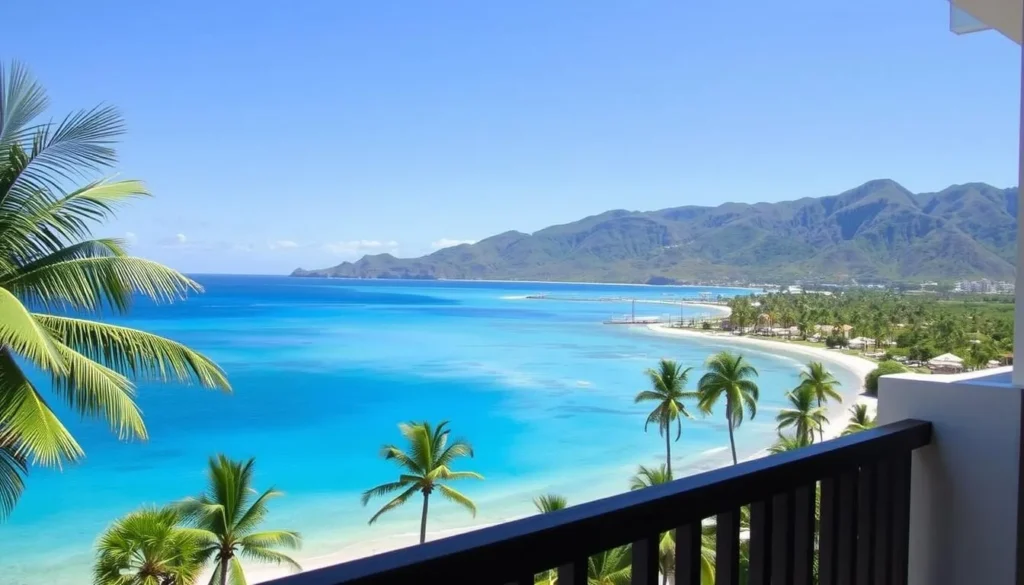
Stunning view of Trujillo Bay from accommodations near the national park
Hotels & Resorts
Trujillo has several mid-range hotels and beachfront resorts that offer comfortable rooms, restaurants, and amenities like swimming pools. Many provide stunning views of Trujillo Bay and are within a short drive of the park entrance.
Guesthouses & B&Bs
For a more intimate experience, consider staying at one of Trujillo’s family-run guesthouses or bed and breakfasts. These often provide a more authentic local experience and personalized service at lower rates than larger hotels.
Camping Options
For the adventurous, backcountry camping is allowed within Capiro Calentura National Park. There are cleared sites available near the summit by the radar station, but be aware there’s no water source, so you must bring all supplies and pack out all trash.
Find your perfect stay near Capiro Calentura
Browse accommodations in Trujillo for easy access to the national park.
Pro Tip: Book accommodations in advance during the high season (December-April) as Trujillo’s limited lodging options can fill up quickly, especially during holidays and weekends.
Dining & Local Cuisine
There are no dining facilities within Capiro Calentura National Park, so visitors should plan accordingly. The town of Trujillo offers various dining options where you can enjoy local Honduran cuisine and fresh seafood from the Caribbean.
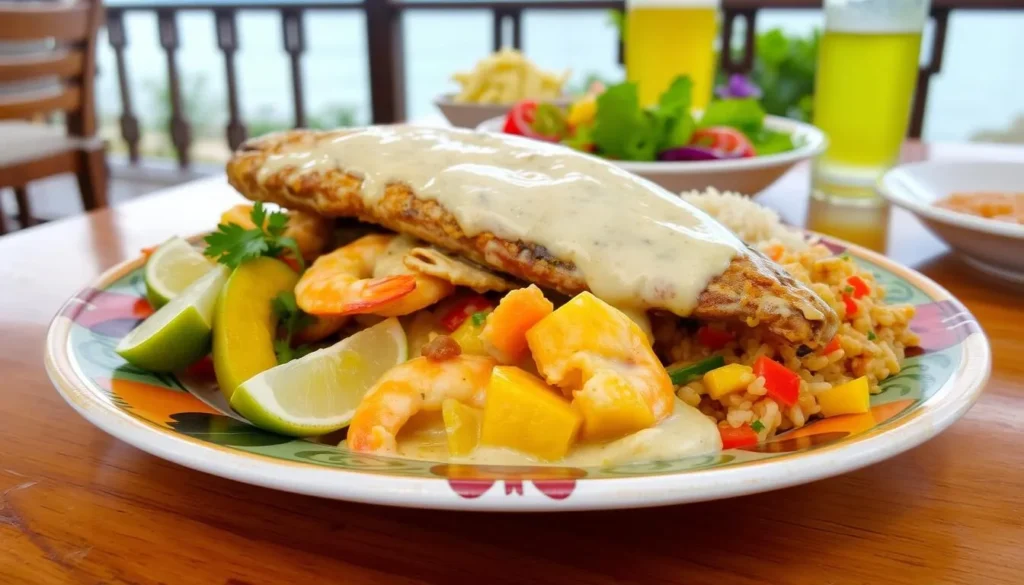
Delicious local seafood available in Trujillo restaurants
What to Eat in Trujillo
Local Specialties
- Sopa de Caracol – Conch soup with coconut milk, a Garifuna specialty
- Pescado Frito – Whole fried fish with plantains and rice
- Tapado – Seafood stew with coconut broth
- Baleadas – Flour tortillas filled with beans, cheese, and cream
- Tajadas – Fried plantain chips often served with meals
Dining Tips
- Restaurants in Trujillo range from casual beachside eateries to more upscale hotel restaurants
- Fresh seafood is abundant and highly recommended
- Try the local tropical fruits like mangoes, papayas, and pineapples
- Most restaurants accept cash only; ATMs are available in Trujillo
- Typical meal times are 12-2pm for lunch and 6-8pm for dinner
Park Picnics: If you plan to spend a full day hiking in the park, pack plenty of water and snacks. There are no food or water sources within the park. A packed lunch can be enjoyed at the summit while taking in the panoramic views.
Attractions, Sightseeing & Activities
Capiro Calentura National Park offers a variety of natural attractions and activities for nature lovers and adventure seekers. From challenging hikes to wildlife watching, there’s something for everyone to enjoy in this pristine protected area.
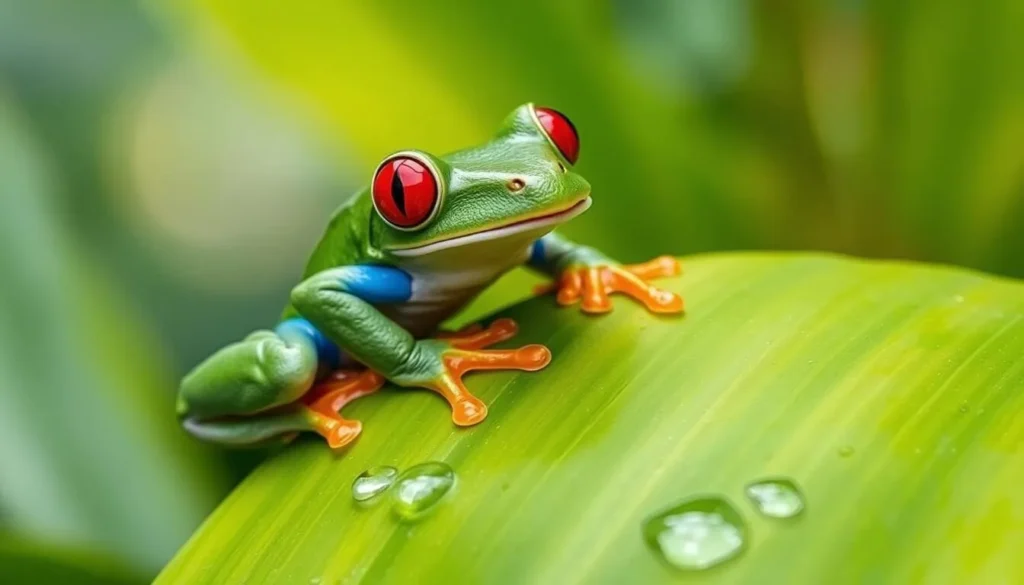
The iconic red-eyed tree frog, one of the park’s most photogenic residents
Top Attractions in Capiro Calentura National Park
Mountain Summits
The twin peaks of Capiro and Calentura offer challenging hikes with rewarding panoramic views of Trujillo Bay and the Caribbean coast. The 4-hour trek to either summit is the park’s signature experience.
Cuevas de Cuyamel
These fascinating karst caves on the slopes of Calentura mountain contain remnants of pre-Colombian occupation, including stone utensils and ancient ceramics made of gray or reddish-brown clay.
Cloud Forests
At higher elevations, the park’s cloud forests create a mystical environment where mist envelops the treetops. These forests host unique plant species including orchids, ferns, and towering ceiba trees.
Popular Activities
Hiking
The park features several trails of varying difficulty. The most popular lead to the summits of Capiro and Calentura mountains. Start early in the morning to allow enough time for the round trip and to enjoy the views before afternoon clouds roll in.
Birdwatching
With approximately 200 bird species, the park is a paradise for birdwatchers. Look for colorful toucans, macaws, parrots, and delicate hummingbirds. Early morning offers the best birdwatching opportunities.

Birdwatching is a popular activity in the park with around 200 species to spot
Experience the best of Capiro Calentura
Book guided tours with expert naturalists to discover the park’s hidden treasures!
Important: There is no infrastructure within the park, so bring everything you’ll need, especially water. Pack out all trash to help preserve this beautiful natural area.
Wildlife & Natural Highlights
Capiro Calentura National Park is home to an impressive diversity of flora and fauna. The park’s varied ecosystems, from lowland forests to cloud forests at higher elevations, support a wide range of species, many of which are endemic to the region.

A maned howler monkey observing visitors from the safety of the canopy
Notable Wildlife
Mammals
- Maned Howler Monkey – Known for their distinctive calls that echo through the forest
- Jaguar – Elusive and rarely seen, but present in the park
- Ocelot – A smaller spotted wild cat that prefers to stay hidden
- Capuchin Monkey – More commonly spotted than other mammals
- Armadillos, Peccaries & Agoutis – Smaller mammals you might encounter on trails
Birds & Reptiles
- Toucans & Macaws – Colorful birds that add flashes of color to the canopy
- Hummingbirds – Several species flit among flowering plants
- Green Iguana – Often seen sunning themselves on rocks or branches
- Red-eyed Tree Frog – The park’s most photogenic amphibian
- Various Snake Species – Both venomous and non-venomous varieties
Plant Life
The park’s forests are rich in plant diversity. Tall ceiba and mahogany trees form the canopy, while the understory is filled with ferns, palms, and other tropical plants. The humid environment supports numerous orchid species that add splashes of color to the green backdrop. At higher elevations, the cooler temperatures and frequent mist create ideal conditions for unique cloud forest vegetation.

One of many orchid species thriving in the park’s humid environment
Conservation Note: Many of the species in Capiro Calentura National Park play crucial ecological roles. For example, the maned howler monkey helps promote plant diversity by spreading seeds throughout its range, while birds assist with pollination and insect control.
Safety, Etiquette & Local Customs
Visiting Capiro Calentura National Park requires some preparation and awareness of safety considerations. Following these guidelines will help ensure a safe and enjoyable experience while respecting the natural environment and local customs.
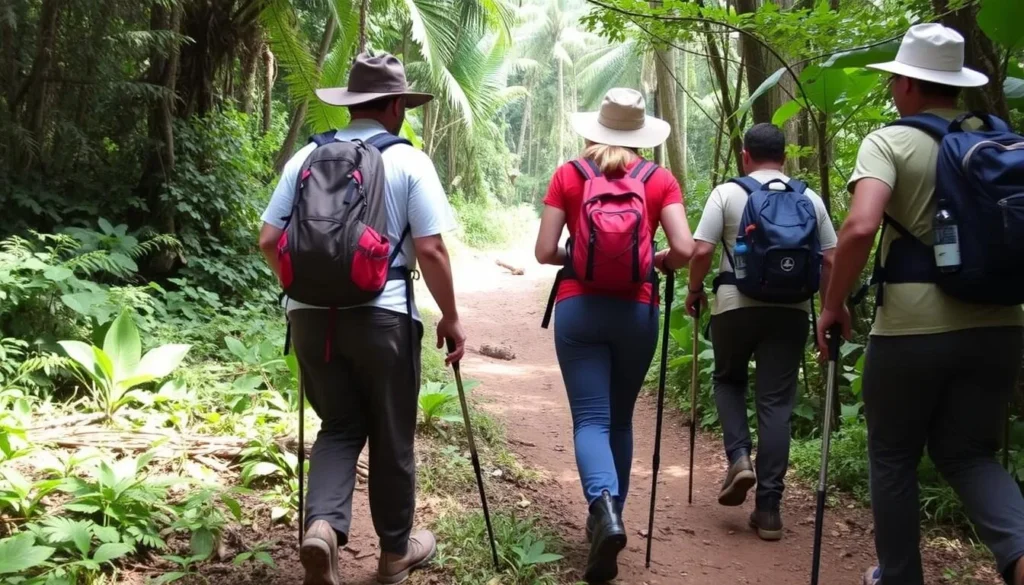
Well-prepared hikers enjoying the trails safely with proper equipment
Safety Tips
Hiking Safety
- Always hike with a companion or group
- Consider hiring a local guide for unfamiliar trails
- Start hikes early to avoid afternoon heat and potential rain
- Wear appropriate footwear with good traction
- Bring sufficient water (at least 2-3 liters per person)
- Pack a basic first aid kit, including insect repellent
Wildlife Safety
- Observe wildlife from a distance; never approach or feed animals
- Make noise while hiking to avoid surprising wildlife
- Watch where you step and place your hands to avoid snakes
- If you encounter a snake, remain calm and slowly back away
- Be aware that howler monkeys may drop branches from above
Etiquette & Conservation
- Stay on designated trails to prevent erosion and habitat damage
- Practice “Leave No Trace” principles—pack out all trash
- Do not remove plants, animals, or artifacts from the park
- Keep noise levels down to avoid disturbing wildlife
- Respect any instructions from park staff or guides
- If camping, use only designated areas and properly extinguish any fires
Health Precaution: Honduras is a tropical country with mosquito-borne illnesses. Use insect repellent, wear long sleeves and pants, and consider antimalarial medication if advised by your healthcare provider.
Practical Travel Tips
These practical tips will help you make the most of your visit to Capiro Calentura National Park and ensure a smooth, enjoyable experience in this beautiful corner of Honduras.

Proper preparation with essential gear is key to enjoying the park safely
What to Pack
Essential Items
- Hiking boots or sturdy shoes with good traction
- Lightweight, quick-dry clothing (long sleeves and pants recommended)
- Rain jacket or poncho (even in dry season)
- Sun protection (hat, sunglasses, sunscreen)
- Insect repellent with DEET
- Sufficient water (minimum 2-3 liters per person)
- Snacks and lunch for full-day hikes
Useful Extras
- Binoculars for wildlife viewing
- Camera with zoom lens for wildlife photography
- Small first aid kit
- Hiking poles for steep sections
- Lightweight backpack
- Plastic bags to protect electronics from rain/humidity
- Field guide for birds or wildlife identification
Other Practical Information
- Park Fees: No entrance fees are currently required, but this may change, so verify before visiting
- Guides: While not mandatory, local guides enhance the experience and typically charge $20-30 USD per day
- Cell Service: Limited or non-existent within the park; inform someone of your plans before hiking
- Language: Spanish is the primary language; basic Spanish phrases are helpful
- Currency: Honduran Lempira is the local currency; bring cash as ATMs are limited to Trujillo town
- Nearby Attractions: Consider visiting Trujillo’s historic fort, beaches, and the nearby Río Plátano Biosphere Reserve
Arriving by cruise?
Trujillo is a cruise port! Check out cruise options that include this destination.
Ready for Your Capiro Calentura Adventure?
Capiro Calentura National Park offers a genuine wilderness experience that showcases Honduras’ incredible biodiversity and natural beauty. From challenging hikes to the twin peaks with their breathtaking panoramic views to encounters with colorful wildlife in pristine forests, this hidden gem rewards adventurous travelers willing to venture off the beaten path.
Whether you’re an avid hiker, passionate birdwatcher, or simply a nature lover seeking tranquility away from crowded tourist destinations, Capiro Calentura provides an authentic experience of Central American wilderness. As you plan your journey to this remarkable park, remember that the effort of reaching its summits and exploring its forests is richly rewarded with memories that will last a lifetime.
Start planning your Capiro Calentura adventure today!
Find flights, accommodations, and activities for an unforgettable experience.
The above is subject to change.
Check back often to TRAVEL.COM for the latest travel tips and deals.
